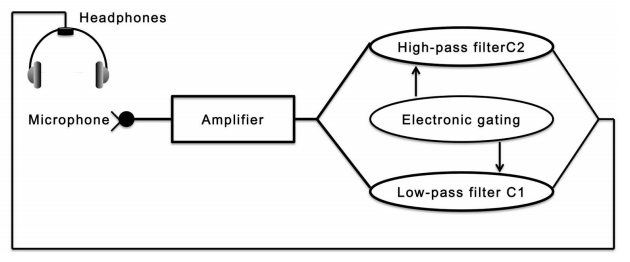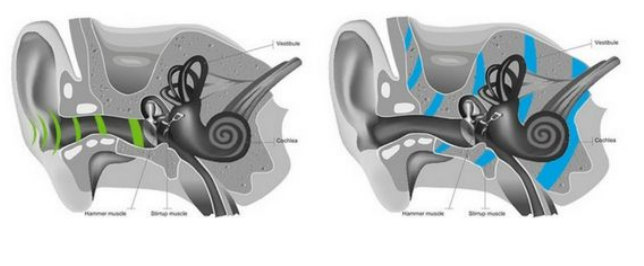Sound and Listening Training – The Tomatis Method
Mindd Foundation
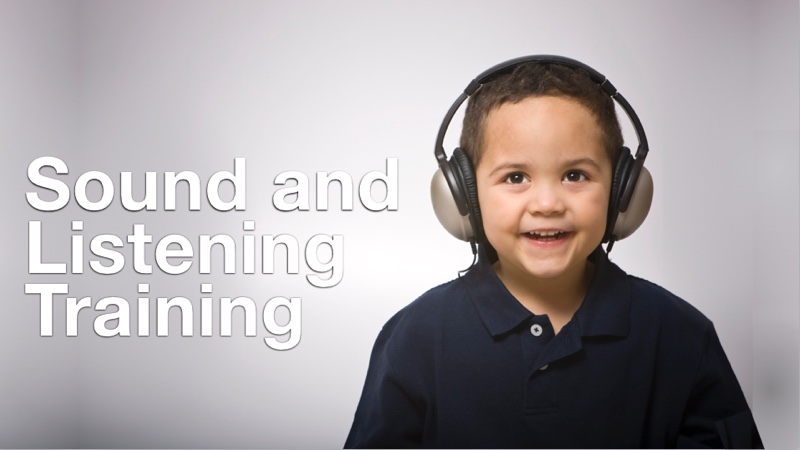
Sound and listening training is now recognized as a powerful method of neuroscience that can impact on learning and emotional development. The Tomatis Method has become a recognised standard of research and therapy.
Sound and Listening Training is a Key to Understanding
The use of sound and music in the management of learning and communication difficulties has evolved and improved over time.
Even ancient civilizations realized the power of music but more recently, neuroscience has helped explain how music and sound can not only impact the brain but also change it.
The idea that music and sound can change the brain originates from the intersection of two key areas of recent research:
- We now know that the brain is “plastic”, which means that it can change itself and create new connections between many different neurological areas
- The ear is more than a passive sensory organ that simply receives sounds; it is implicated in dynamism, movement, coordination, and rhythm
In other words, the ear is a fundamental “sensory gate” through which one can access the brain and create change.
The Use of Sound and Music Therapies
Through the years, therapies utilizing sound and music have developed different protocols that have produced varying effects on wide-ranging conditions.
With so many programs claiming similar effects and results, it is hard for the consumer to distinguish and evaluate any one program. In reality, there are significant differences between these programs, their approaches and their potential effects.
Music Healing and Audio Therapy
Let’s start by differentiating music healing and therapy from audio-based training.
- Sound healing facilitates and directs specific sounds to produce vibrations that influence overall well being.
One of the most well-known sound therapies is called the Mozart Effect, which is based on claims that some pieces of Mozart’s music can greatly impact emotion and even cognitive functions.
Some research papers support this view; others do not. It is now generally accepted, however, that as soon as any music is appreciated by the listener, it has the potential to influence emotions.
This is quite distinct from sound stimulation training. - Music therapy is based on the music’s structure and rhythm and designed to actively engage a participant in communication through music to produce a specific health result. For example: a nonverbal child communicating through beating a drum.
- Sound training promotes music as stimulation with the intent of identifying and producing frequencies specific to the listener.
Sound and listening training is fundamentally based on the work and discoveries of a French physician, Ear, Nose and Throat (ENT) specialist, Dr Alfred Tomatis.
The Tomatis Method – Original Research
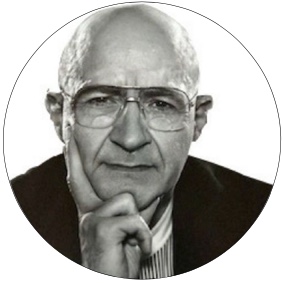
Dr Tomatis
In the early 1950s, Dr Alfred Tomatis, a French physician and an ENT (Ear, Nose and Throat) specialist, managed acoustic labs of aeronautical factories.
While examining workers suffering from work-related deafness, he noted that the auditory concerns presented were always accompanied by a vocal deficiency. He also treated and tested professional singers, who also presented the same audiometric profile as those factory workers. He then theorized…
“The voice does not produce what the ear does not hear”
With his musical upbringing and passion for treating ear, nose, and throat disorders, he was able to develop the three Tomatis Laws, known as the “Tomatis Effect”.
He submitted them to the Academy of Sciences in Paris in 1959. The three laws are:
- The voice can only reproduce what the ear can hear
- If the sounds can be restored to the ear, the voice will immediately and unconsciously restore the missing sounds
- If the ear is conditioned sufficiently with one’s own voice with good quality, the changes will be maintained (lasting effect)
Ear and Voice Relationship
These laws established the relationship between ear and voice as well as the ear’s contribution to overall listening and communication.
By 1953, Dr Tomatis invented his first technical and electronic sound system known as the “Electronic Ear”. This provided re-education and restoration of singers’ deficient voice qualities. It was presented and won the Prize of Innovation at the Brussels World Exhibition in 1958.
Who can Benefit from Sound and Listening Training and the Tomatis Method?
In the following decades after initial development, the Electronic Ear sound system was improved, which expanded the Tomatis Method’s domain of applications. Tomatis methodology is now useful to help people of all ages with:
- Learning difficulties – including challenges like dyslexia
- Communication difficulties
- Emotional disorders
- Language problems
- Auditory processing disorders
- Delays in speech and language development
- Behavioral issues like ADHD, Autism and other autism spectrum disorders
- Sensory integration issues
- Depression, anxiety, stress, and more
Development of the Tomatis Method
The Tomatis Method of Sound and Listening Training constantly evolved with the development of digital technology and new enhancements due to the growing knowledge of the ear, the brain, and the body.

The latest digital Electronic Ear, which is now known as TalksUp, incorporates the Tomatis parameters such as Gating, delays, precession, acoustic filtering, active work, ear dominance, mother’s voice work, all using high-quality headphones equipped with air and bone conductions.
Re-Training the Listening Function affects Behavior
These parameters play big roles in successfully re-training the listening function. Listening in this case means the active functioning of the ear. That is when one intentionally, attentively, and emotionally uses one’s hearing for learning and communication.
Speaking of hearing, Dr Tomatis recognized that being dominant in the right ear or using the right ear to focus, can improve not only how you understand ideas but also the quality of reception, eventually enabling better emotional and behavioral responses.
How? Remember that the left side of the brain, where the right ear is connected, houses our auditory processing centers responsible for speech and language comprehension, movement and coordination, and other intellectual-emotional functions. That is why delayed auditory processing among children, for instance, causes delays in speech and language, learning difficulties such as dyslexia and behavioral issues like ADHD, Autism and more.
Dr Tomatis realized that working on the right ear, that is, training the right ear to discriminate and detect sound changes, could ultimately help improve overall personal growth and social interaction.
Tomatis Electronic Gating
The most important of the various parameters is called the Tomatis Electronic Gating. The Gating is designed to surprise the brain by creating unpredictable sound contrasts in both music and voice.
It is fundamental human nature to try to anticipate things. Indeed, we feel confident when we can predict what is going to happen and that is what the brain is trying to do all the time. For example, when we speak, the brain predicts the sound of our voice and adjusts the voice emitted based on this prediction.
The Tomatis Gating is designed to challenge the brain exactly in the same way. By changing the contrasts of sounds, the brain is forced to try to cope with this change.
In other words, the Gating is waking up the brain from its automatic routine and puts it into an active listening posture. Unpredictable contrasts don’t mean random contrasts. If the brain cannot anticipate the change, it is still designed to emphasize specific frequencies.
How does the Gating work?
Technically, the Tomatis Electronic Ear begins by dividing the sound input into two independent channels: C1 and C2. The C1 channel delivers low frequencies (calming and soothing timbre) of the sound while the C2 channel emphasizes high frequencies (sharper, brighter timbre).
The high frequencies of the C2 channel, in particular, stimulate the attention mechanisms of the brain necessary for the accurate processing of sounds. The switch to C1 puts the auditory system in momentary relaxation.
The back-and-forth switching between these channels, or “The Gating”, is the core of the Tomatis Method. Gating treats sound by changing its intensity and timbre (double change) to create a contrast that exercises the ear-brain connections.
In addition, the device is also equipped with electronic mechanisms called filters.
The TalksUp Device for Sound and Listening Training
The TalksUp device uses high-pass, low-pass, and band-pass filters with different slopes of attenuation. These slopes are kept soft in order to accommodate any client’s subjective perception.
Next, these sound contrasts are forwarded to the high-quality headphones, specially designed for both air conduction and bone conduction.
Air conduction occurs when sound is transmitted through our ears, while bone conduction acts through a vibrator built in the headphones, which detects sound waves moving through our bone structure.
Bone conduction starts before birth and is the first way for the unborn child to hear the sounds in the mother’s womb as well as his/her mother’s voice.
Bone conduction and your voice
In addition, bone conduction also has a great impact on our own voice regulation. When we speak, we hear our voice through bone conduction much better than by air conduction.
This is the reason why when we hear a recording of our voice, it seems unfamiliar. Because transmission of the sound through the bone is faster than through the air canal, using music transmitted through the bone canal helps the brain anticipate the arrival of sound from the air canal. This is a fundamental way to get the brain to pay attention to sounds.
If the Tomatis Method is indeed using bone conductors, then the conduction can be adjusted to push the effect to its maximum.
A distinct feature of the Tomatis listening device is its ability to individually perform the switching of bone and air conduction with different adjustable time delays, also known as Delay and Precession.
- Delay (Delay 1) is the time necessary for bone conduction to go from C1 to C2.
- Precession (Delay 2), additionally, is the time necessary for the air conduction to go from C1 to C2 after the bone conduction signal has switched to C2.
As mentioned, sound travels faster through bone conduction than air conduction causing a natural delay between the two. However, the Tomatis Method increases the natural delay by means of the Precession mechanism, which gives the untrained ear a longer opportunity to get ready for listening.
Moreover, these time delays are adjustable; so, once the ear learns or re-learns to listen more quickly, Tomatis practitioners can gradually shorten the time span between the two conductions.
What is involved in the Tomatis Program?
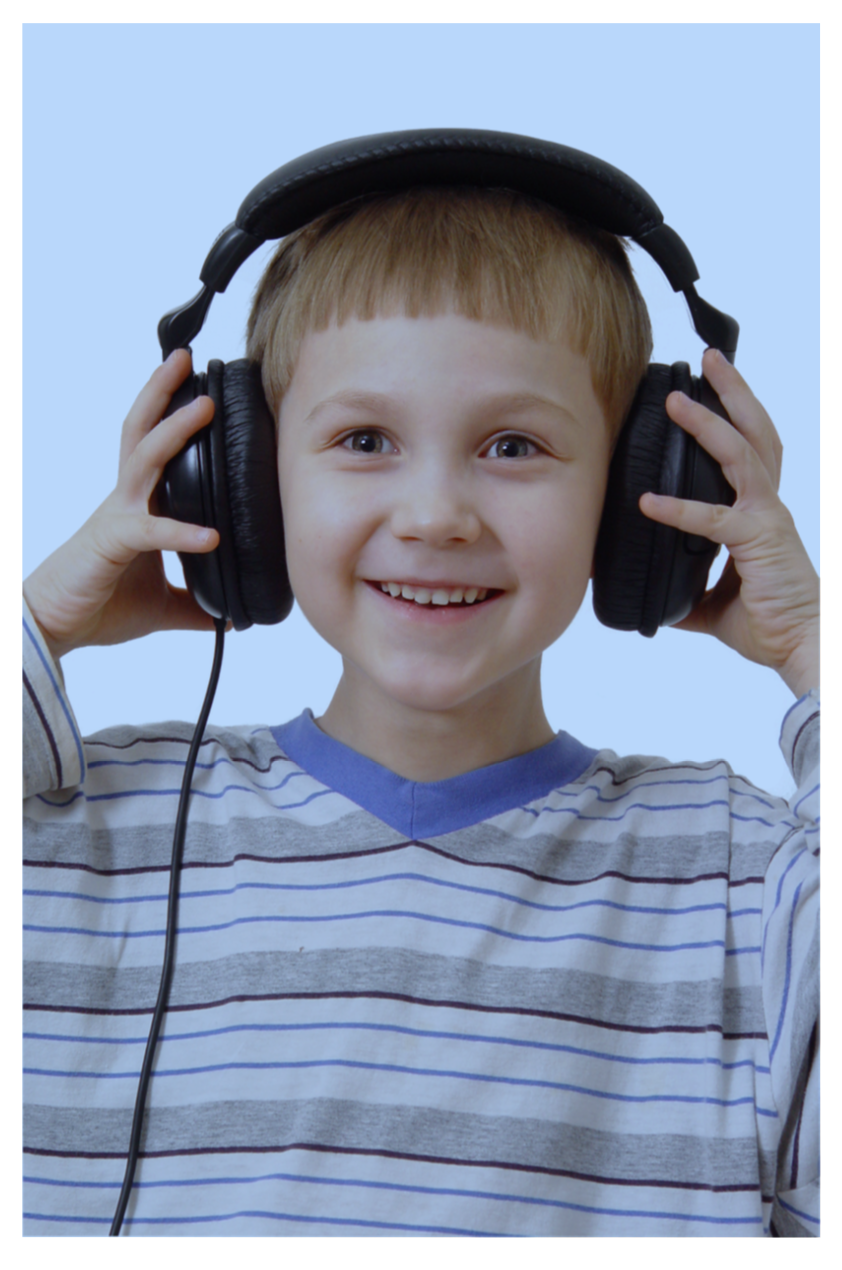
The Tomatis Method of Sound and Listening Training starts with an individual assessment. Then the first program of listening of 1-2 hours a day for 10-15 days is typically recommended. Further programs are suggested with breaks of four (4) to twelve (12) weeks between listening sessions.
At any one stage of the Tomatis program, a Tomatis practitioner may see the need for the client to undergo the Active Phase.
The Active Phase is a situation where he/she is listening to his/her own voice (e.g. singing, reading or talking) through a microphone. This stage allows a person to practice self-listening and eventually, learn to control his/her own voice with the help of the modifications done by the headphones and the TalksUp parameters.
Sound and Listening Training Starts in the Womb
Dr Tomatis was a pioneer in the field of prenatal life. He understood that listening starts in the womb. Listening can be compromised through the conditions of the pregnancy in terms of stress, trauma, physical or emotional difficulties experienced by the mother-to-be.
The Tomatis Method offers a positive way of revisiting that special time by recording the mother’s voice and having the child listen to it filtered, just like it was in the womb. All these settings are combined together to produce the best results.
Depending on the level of Tomatis professional training, practitioners and consultants have access to the features described above, allowing them to individualize programming to suit the clients’ needs.
The Tomatis professional training is only provided to professionals who work in the health and education fields. The speciality of the Tomatis Method is to retrain auditory processing, meaning the connections between the ear, the brain, and the body.
Treatment for Auditory Processing Disorders
Research shows that auditory processing difficulties are a strong component of learning, communication, and behavior. The Tomatis Method helps conditions such as speech delay, learning difficulties, sensory integration issues, ADHD, autism, depression, anxiety, stress, and more.
The Tomatis Method is available in 75 countries, has more than 2,000 practitioners around the world, and benefits over 200,000 people per year. As an educational intervention, the Tomatis Method is designed to improve the quality of life and wellbeing of children and adults, helping them to fit into society, and giving them a chance for a happier and more successful life.
The Original Tomatis Method of Sound and Listening Training
This article refers to the original method that Dr Tomatis invented. In the author’s opinion, this yields the best results. However there are other systems, often based on Tomatis’ work which are also available.

About the Author Françoise Nicoloff
Françoise is a French/Australian registered Psychologist and an international Tomatis Consultant and Trainer.
Françoise was trained and worked with Dr Tomatis in France in the late 1970s. She has worked for nearly four decades with Sound and Listening Training around the world with people of all ages suffering from anxiety, depression, learning and behaviour difficulties, trouble in communication. She is passionate about helping those people especially when their difficulties are linked to auditory processing which means that their brain does not hear what their ears hear. Recently, she has also been asked by the Tomatis group to support and assist families and professionals in China. She is the co-author of the Listening Journey series. You can contact her at her clinic in Sydney.
References
See more at www.tomatis.com or visit www.tomatis.com.au
Function: Listen to the Tomatis Effect. (n.d.). Retrieved July & Aug. 2017, retrieved from: http://www.tomatis.com/en/tomatis-method/its-function.html
The Tomatis Listening Program. (n.d.). Retrieved July & Aug. 2017, retrieved from: http://www.tomatis.com.au/listeningprogram.php
Nicoloff, F. (2015, May 12). The Ear: The Missing Link: The ear does a lot more than just hear!
Resources of the Australian Tomatis Method [Webinar]
Nicoloff, F. (2017, July & Aug.). Auditory Processing Disorder: When the Brain Can’t Hear What the
Ear Hears. Lecture presented at Learning Difference Convention in Australia, Sydney.
Nicoloff, F. (2017, July & Aug.). Ear and the Tomatis Method.
Lecture presented at Disability Services WA, Perth.
Nicoloff, F. (2016, July & Aug.). Tomatis Method & Special Needs. Lecture presented in China, at Fuju.
(C) Tomatis, Tomatis Electronic Ear, TalksUp and Gating are Copyright terms
Sound and Listening Training – Further Resources
The following is a review of some of the most popular sound and listening training programs. This is not necessarily an exhaustive list of all the available programs referring to Dr Alfred Tomatis’ discoveries, as there are still new derivatives being developed in the sound and listening training field.
Auditory Integration Therapy
What is Auditory Integration Training (AIT) – for Hearing, Autism, ADHD, ADD, Dyslexia and other special needs. (2016). Retrieved July & August 2017, from http://auditoryintegrationtraining.co.uk/auditory-integration-training-ait-for-hearing-autism-adhd-add-dyslexia-and-other-special-needs-2/auditory-integration-training-ait-for-hearing-autism-adhd-add-dyslexia-and-other-special-needs/
Berard, G. (2006, April). Key Guidelines for Berard AIT. Retrieved July & August 2017, from http://www.drguyberard.com/keyguidelines.html
Documented AIT Gains for Dr. Guy Berard’s Auditory Integration Training Clinical Practice. (2004). Retrieved July & August 2017, from https://www.aitinstitute.org/dr_guy_berard.htm
Brockett, S. (2006, May 1). The Berard Method. Retrieved July & August 2017, from Documented AIT Gains for Dr. Guy Berard’s Auditory Integration
Training Clinical Practice. (2004). Retrieved July & August 2017, from http://berardaitwebsite.com/the-berard-method/
Sound Therapy International
What is Sound Therapy? (2016). Retrieved July & August 2017, From https://mysoundtherapy.com/what-is-sound-therapy/
Collins, S. (2015, May 21). What is Sound Therapy? Retrieved July & August 2017, from http://www.soundtherapyperth.com/overview/index.php
Samona Sound Therapy
[Brochure]. (n.d.). Retrieved July & August 2017, from http://www.samonas.com/pdfpermanent/ProBro chure.pdfIntegrated Listening (iLS)
What is ILS? (n.d.). Retrieved July & August 2017, from http://integratedlistening.com/what-is-ils-2/
Integrated Listening Systems ILS. (n.d.). Retrieved July &
August 2017, from http://www.brainworksneurotherapy.com/integrated-listening-system-ils
Therapeutic Listening
Therapeutic Listening. (2017). Retrieved July & August 2017, from https://vitallinks.com/therapeutic-listening/
Kiley, C. (2013, March 10). What is Therapeutic Listening®. Retrieved July & August 2017, from http://mamaot.com/what-is-therapeutic-listening/
The Listening Program
The Listening Program Music. (n.d.). Retrieved July & August 2017, from https://advancedbrain.com/the-listening-progra m-music/
The Listening Program (TLP). (1987-2017). Retrieved July &
August 2017, from http://www.nacd.org/center-for-speech-sound-tsi-tlp-programs/the-listening-program-tlp/
The Listening Fitness
Listening Fitness with the LIFT. (n.d.). Retrieved 2017, from http://www.listeningfitness.com/equipment.html

